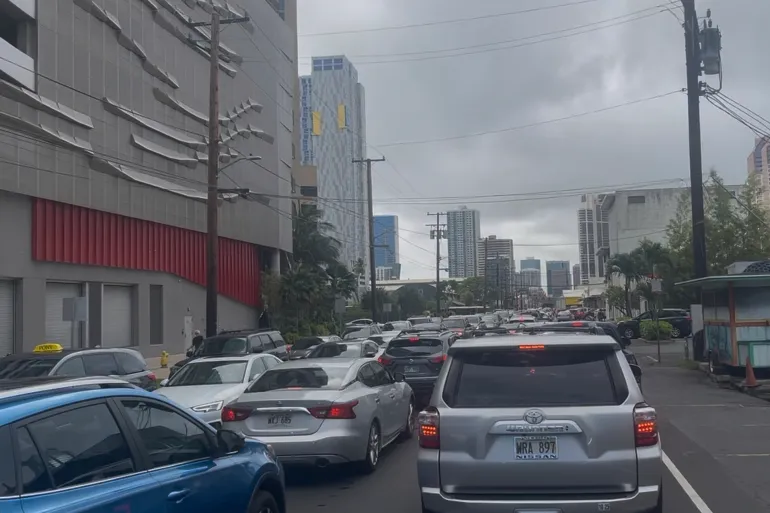Why was Bad Bunny chosen for the Super Bowl halftime show? Here’s what to know

Why was Bad Bunny chosen for the Super Bowl halftime show? Here’s what to know
Latin music’s global superstar Bad Bunny is set to electrify one of the world’s most-watched stages — the Apple Music Super Bowl halftime show. The NFL, Apple Music, and Roc Nation announced Sunday that the Puerto Rican hitmaker will headline the show at Levi’s Stadium in Santa Clara, California, on February 8.
The 31-year-old Grammy winner, born Benito Antonio Martínez Ocasio, has cemented himself as a trailblazer in reggaeton and Latin trap, and his halftime selection comes at a high point in his career. Earlier this month, he drew more than 500,000 fans to a record-breaking concert residency in Puerto Rico. He also leads the pack with 12 nominations at the upcoming Latin Grammys, reinforcing his reign as one of the most streamed artists on the planet with projects like his all-Spanish album Un Verano Sin Ti.
Bad Bunny’s cultural footprint extends far beyond music. He has starred in films including Bullet Train and Caught Stealing, fronted campaigns for major fashion houses, and continues to elevate Latin music into the global mainstream.
Reacting to the announcement, Bad Bunny said the honor transcends his personal career. “This is for my people, my culture, and our history,” he noted, telling fans to share the moment with their families: “Ve y dile a tu abuela, que seremos el HALFTIME SHOW DEL SUPER BOWL.”
Jay-Z, Roc Nation’s founder, praised the artist’s influence, saying, “What he’s done — and continues to do — for Puerto Rico is truly inspiring. We are honored to have him take the world’s biggest stage.”
The halftime show will be co-produced by Roc Nation and Emmy-winning producer Jesse Collins, with Hamish Hamilton returning as director. NFL executive Jon Barker described the upcoming performance as “the kind of unforgettable experience we’ve come to expect from this iconic cultural moment.”
Apple Music’s Oliver Schusser also highlighted Bad Bunny’s global reach: “His music has not only broken records but has elevated Latin music to the center of pop culture.”
Bad Bunny’s Super Bowl spotlight follows last year’s record-setting performance by Kendrick Lamar and SZA in New Orleans, which drew 133.5 million viewers — the most-watched halftime show in NFL history.
Before taking the halftime stage, Bad Bunny will host Saturday Night Live on October 4, adding yet another milestone to an already historic year.
FAQ Section:
Who is performing at the 2026 Super Bowl halftime show?
Puerto Rican superstar Bad Bunny has been announced as the headliner for the Apple Music Super Bowl halftime show in Santa Clara, California.
Where will the 2026 Super Bowl halftime show take place?
The halftime performance will take place at Levi’s Stadium in Santa Clara, California, on February 8, 2026.
Why is Bad Bunny’s performance historic?
Bad Bunny’s headlining role marks another milestone for Latin music, placing a Spanish-speaking artist at the center of America’s biggest sporting and entertainment stage.
What did Bad Bunny say about headlining the Super Bowl?
He called the opportunity bigger than himself, saying it represents “my people, my culture, and our history,” and urged fans to celebrate the moment with pride.
Who is producing the halftime show?
The show will be co-produced by Roc Nation and Emmy-winning producer Jesse Collins, with Hamish Hamilton directing.
What else is Bad Bunny working on in 2025?
He’s hosting Saturday Night Live on October 4 and leads with 12 nominations at the Latin Grammys.
Who is Bad Bunny?
Benito Antonio Martínez Ocasio — the artist the world now knows as Bad Bunny — has spent the past decade upending expectations about what Latin music can be on the global stage. He arrived as a genre-bending, bilingual superstar who turned reggaeton, Latin trap and bedroom-pop melancholy into mainstream stadium anthems, and in 2026 he’ll take that influence to one of the biggest stages on Earth: the Apple Music Super Bowl halftime show.
Below is a full profile tracing his life, craft, cultural impact and what his Super Bowl headline moment means for music and representation.
Early life and beginnings
Born in 1994 and raised in Vega Baja and later San Juan, Puerto Rico, Benito Martínez came of age amid the island’s rich musical traditions — salsa, reggaetón, plena — while absorbing the global sounds of hip-hop, punk and electronic music. He began releasing tracks on SoundCloud in the early 2010s; quick Internet traction and a string of charismatic, forward-thinking singles set him on a path from modest mixtape notoriety to global stardom.
Breakthrough and rise
Bad Bunny’s first major breakthrough came as streaming platforms turned regional hits into international phenomena. His early collaborations and solo singles drew notice for their melodic hooks, trap-influenced beats and lyrics that mixed streetwise portraiture with intimate vulnerability. Each project since has widened his sonic palette: from hard-edged Latin trap to sunny, melodic reggaeton and introspective, genre-fluid experiments.
His 2022 album Un Verano Sin Ti was a watershed — breaking streaming records and topping the U.S. Billboard 200 — and helped cement him as a global force in pop music. The album’s massive streaming footprint and chart domination marked a turning point in how Spanish-language music is received worldwide.
Awards, recognition and mainstream milestones
Bad Bunny is a multi-Grammy-winning artist whose awards and nominations reflect both industry respect and commercial clout. He has earned multiple Grammy Awards and dozens of other major accolades — achievements that speak to his cross-cultural reach and consistent chart performance.
He has also moved into film, fashion and sports ownership, broadening his public platform beyond music and into cultural ambassadorship.
The Puerto Rico residency and cultural homecoming
In 2025 Bad Bunny staged an enormous concert residency in Puerto Rico that became a national event — a celebration and a powerful reminder of his roots. The run drew hundreds of thousands of fans and generated substantial economic activity on the island, underlining his unique role as an artist who both represents and reinvests in Puerto Rico.
Politics, persona and public voice
Bad Bunny’s public image has always blended defiant independence with a social conscience. He has used his platform to spotlight Puerto Rico’s struggles, to celebrate Latin identity and, at times, to nudge conversations about power and recovery after crises like Hurricane Maria. Yet he generally resists being boxed into a single political label, preferring to center culture, community and creative expression in public statements.
Sound and style: why he connects
Musically, Bad Bunny is a chameleon. He mixes the beat-forward swagger of reggaeton and trap with surprising melodic choices, melancholic lyricism, and unexpected production textures—sometimes leaning tropical, other times minimal and raw. His vocal style — often half-spoken, half-sung — and his willingness to sing entirely in Spanish have made his music feel both specific and universal. That authenticity is a key reason he resonates across language barriers.
Visually and stylistically, he flips expectations: bold fashion choices, playful gender-fluid looks and an aesthetic that borrows from skate culture, high fashion and island life. That image-making has helped him cross into film and fashion in ways many Latin artists of his generation have not.
Commercial power and streaming dominance
Streaming-era metrics tell part of the story: Bad Bunny’s catalog, and particularly Un Verano Sin Ti, has set records on major platforms and consistently placed him among the top-streamed artists worldwide. Those numbers translated to sold-out stadiums and a level of commercial muscle that makes him a natural candidate for high-visibility events like the Super Bowl.
What the Super Bowl booking means
Being named the Apple Music Super Bowl halftime headliner places Bad Bunny at a cultural crossroads: he will perform to tens of millions of live viewers — a mainstream American TV audience that has historically favored English-language performers. His appearance is a concrete sign that Spanish-language artists now anchor global pop culture moments, not just participate in them. The announcement was made jointly by the NFL, Apple Music and Roc Nation.
For many, the performance will be historic: a Puerto Rican artist bringing Latin trap and reggaeton aesthetics to the NFL’s most-watched musical stage. For Bad Bunny, it’s both a career capstone and an opportunity to shape mainstream perceptions of Latin music culture.
Creative expectations and production
Roc Nation and experienced producers are attached to the show, and the halftime stage often rewards high-concept visual storytelling and memorable guest moments. Given Bad Bunny’s track record — genre-blending production, theatrical live shows and an instinct for surprise collaborations — viewers should expect a tightly produced, culturally specific but universally accessible set that leans into spectacle without sacrificing musical identity.
Criticism and controversies
Bad Bunny’s ascent hasn’t been without debate. Some critics question the commercialization of regional genres or argue about lyrical content and cultural appropriation. Others have scrutinized how global platforms monetize culture. Bad Bunny has weathered such debates while continuing to push creative boundaries and using his visibility for philanthropic and civic gestures — particularly tied to Puerto Rico.
Personal life and public image
He remains unusually private about intimate details, but public records and profiles show a man who values family and Puerto Rican community ties. He has spoken publicly about the responsibility he feels as an ambassador for his island, and many of his moves — from benefit concerts to public statements — reflect that sense of duty.
Legacy and the long view
Three themes stand out in Bad Bunny’s legacy so far: musical innovation, cultural ambassadorship and boundary-pushing identity. If his Super Bowl performance follows the arc of his career, it will emphasize emotional honesty, sonic diversity and a proud connection to Puerto Rican identity — and it will likely widen the aperture for Latin artists on global pop stages for years to come.



